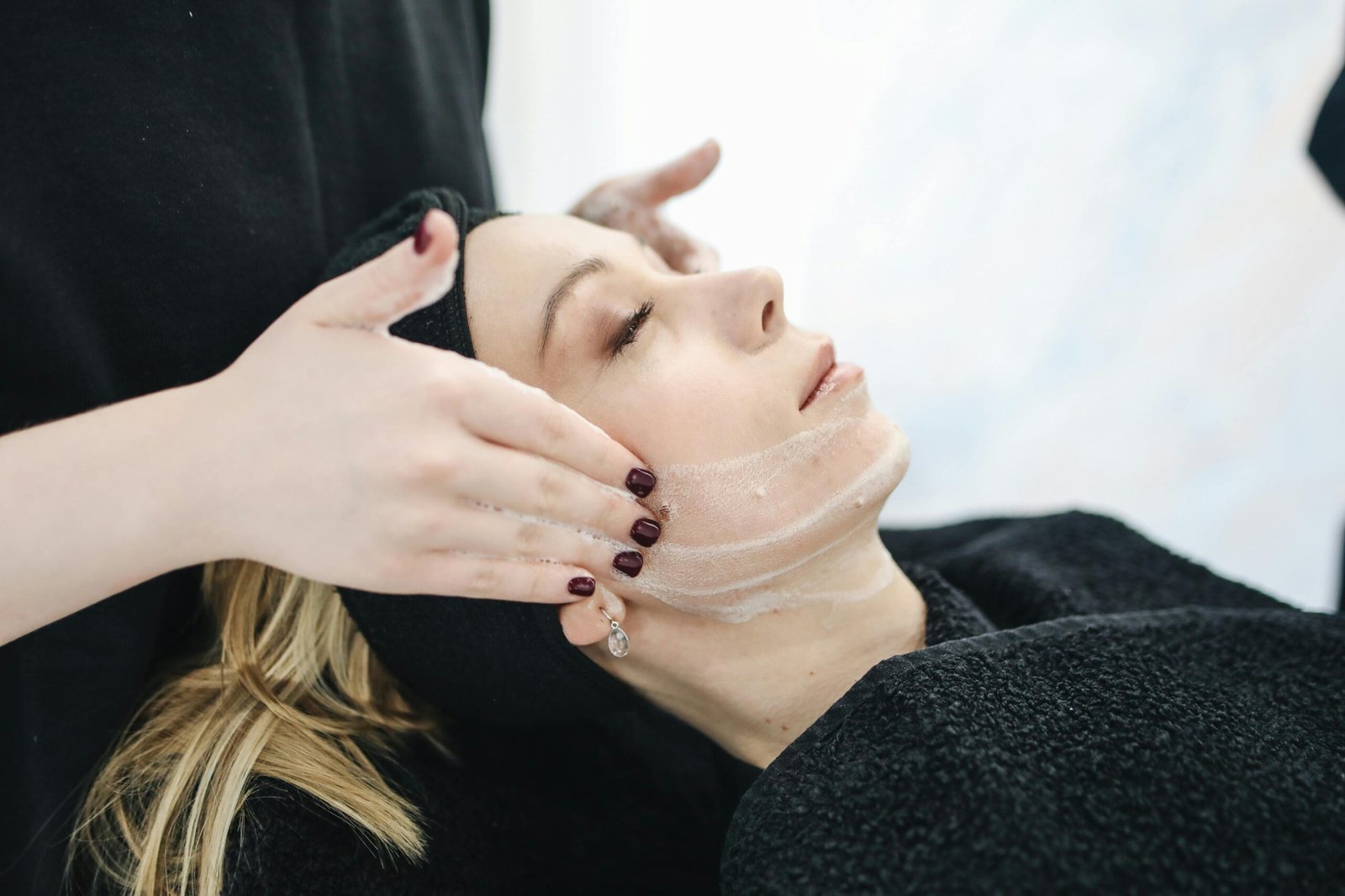Achieving healthy, glowing skin is a goal for many, but with so many products and routines available, it can be overwhelming to know where to start. The key to effective skincare lies in understanding your skin type and tailoring your routine accordingly. In this article, we’ll explore the best skincare routine for your skin type, covering everything from identifying your skin type to choosing the right products and avoiding common mistakes. Whether you’re looking for the best personalized skincare routine, a dermatologist-recommended routine for oily or dry skin, or an affordable skincare routine, this guide has you covered.
I. Understanding Skin Types
A. The Different Skin Types
- Oily Skin: Characteristics and Causes
Oily skin is characterized by excess sebum production, leading to a shiny complexion, enlarged pores, and best skincare routine a higher likelihood of acne. Hormonal changes, genetics, and environmental factors often contribute to oily skin - Dry Skin: Signs and Triggers
Dry skin lacks moisture and often feels tight, flaky, or rough. It can be caused by harsh weather, aging, or using products that strip the skin of its natural oils. - Combination Skin: Features and Management
Combination skin is a mix of oily and dry areas, typically with an oily T-zone (forehead, nose, and chin) and dry cheeks. This skin type requires a balanced approach to address both concerns.
B. Importance of Identifying Your Skin Type
- Impact on Product Selection
Knowing your skin type helps you choose products that address your specific needs, such as oil control for oily skin or hydration for dry skin. - Customization for Effective Results
A tailored routine ensures that your skin receives the right ingredients and treatments for optimal results. - Avoiding Potential Irritations
Using the wrong products can lead to irritation, breakouts, or dryness. Identifying your skin type helps you avoid these issues.
C. How to Determine Your Skin Type
- The Bare-Faced Test: Observing Your Skin
Wash your face and leave it product-free for a few hours. Observe how your skin feels and looks to determine if it’s oily, dry, or a combination. - The Blotting Sheet Method
Press a blotting sheet on different areas of your face. If it picks up oil, you likely have oily skin; if it’s dry, you may have dry or combination skin. - Consulting a Dermatologist: When to Seek Professional Advice
If you’re best skincare routine unsure about your skin type or have persistent skin issues, consult a dermatologist for a professional assessment.
II. Essential Skincare Components
A. Cleansing: The First Step to Healthy Skin
- Types of Cleansers: Foams, Gels, and Creams
Foam cleansers are great for oily skin, while cream cleansers are ideal for dry skin. Gel cleansers work well for combination skin. - Frequency of Cleansing for Different Skin Types
Oily skin may require twice-daily cleansing, while dry skin benefits from a gentle cleanse once a day. - Ingredients to Look for in Cleansers
Look for hydrating ingredients like hyaluronic acid for dry skin and salicylic acid for oily skin.
B. Exfoliation: Removing Dead Skin Cells
- Chemical vs. Physical Exfoliants
Chemical exfoliants (like AHAs and BHAs) are gentler and more effective for most skin types, while physical exfoliants (scrubs) can be harsh if overused. - How Often to Exfoliate Based on Skin Type
Oily skin can handle exfoliation 2-3 times a week, while dry skin should limit it to once a week. - Potential Risks of Over-Exfoliation
Over-exfoliation can damage the skin barrier, leading to irritation and sensitivity.
C. Moisturizing: Hydration is Key
- Types of Moisturizers: Creams, Lotions, and Gels
Creams are best for dry skin, gels for oily skin, and lotions for combination skin. - Choosing the Right Moisturizer for Your Skin Type
Look for non-comedogenic formulas for oily skin and rich, hydrating ingredients for dry skin. - Importance of Moisturizing Even with Oily Skin
Skipping moisturizer can lead to increased oil production. Opt for lightweight, oil-free formulas.
III. Tailored Skincare Routines for Each Skin Type
A. Skincare Routine for Oily Skin
- Morning Routine: Key Steps and Products
Cleanse, apply a lightweight moisturizer, and finish with sunscreen. - Evening Routine: Importance of Removal and Treatment
Double cleanse to remove oil and impurities, use a toner, and apply the best skincare routine treatment like retinol or salicylic acid. - Special Considerations: Avoiding Clogging Pores
Choose non-comedogenic products to prevent breakouts.
B. Skincare Routine for Dry Skin
- Morning Routine: Replenishing Moisture
Use a hydrating cleanser, apply a rich moisturizer, and finish with sunscreen. - Evening Routine: Repairing and Nourishing
Cleanse, use a hydrating serum, and apply a night cream. - Special Considerations: Maintaining Hydration in Dry Environments
Use a humidifier and incorporate hydrating masks into your routine.
C. Skincare Routine for Combination Skin
- Morning Routine: Balancing Different Areas
Use a gentle cleanser, apply a lightweight moisturizer, and use sunscreen. - Evening Routine: Targeting Specific Needs
Cleanse, use a toner, and apply targeted treatments for oily and dry areas. - Special Considerations: Adjusting for Seasonal Changes
Switch to richer products in winter and lighter formulas in summer.
IV. Common Skincare Mistakes to Avoid
A. Overusing Products
- Signs of Overuse and How to Identify Them
Redness, irritation, and breakouts can indicate overuse. - Differentiating Between Treatment and Routine Products
Use treatment products (like retinol) sparingly and focus on consistency with routine products. - Creating a Balanced Approach
Stick to a simple routine with a few effective products.
B. Ignoring the Eye Area
- Importance of Specialized Eye Care
The skin around the eyes is delicate and requires gentle products. - Tips for Choosing Eye Creams
Look for ingredients like caffeine and hyaluronic acid. - Common Mistakes to Avoid with Eye Products
Avoid tugging or using heavy formulas that can cause milia.
C. Skipping Sunscreen
- Importance of Daily Sun Protection
Sunscreen prevents premature aging and skin damage. - Types of Sunscreens and Choosing the Right One
Opt for broad-spectrum SPF 30 or higher. - Myths About Sunscreen Usage
Sunscreen is necessary even on cloudy days and indoors.
V. Adjusting Your Routine with Seasons and Changes
A. Seasonal Adjustments for Your Skin Routine
- Summer: Lightweight Products and Sun Protection
Switch to gel-based products and reapply sunscreen frequently. - Winter: Intensive Moisturization and Barrier Care
Use richer creams and incorporate hydrating serums. - Transitioning Between Seasons: Key Considerations
Gradually introduce new products to avoid shocking your skin.
B. Adjusting for Environmental Factors
- Factors like Pollution and Climate Impacting Skin
Use antioxidant-rich products to combat pollution. - Adapting Your Routine for Travel
Pack travel-sized products and maintain consistency. - Recognizing Signs of Environmental Stress on Skin
Look for increased dryness or sensitivity.
C. Listening to Your Skin
- Observing Changes and Adjusting Your Routine
Pay attention to how your skin reacts to products. - Understanding the Importance of Sensitivity
Avoid harsh ingredients if your skin is sensitive. - When to Consult a Professional
Seek help if you experience persistent issues.
Conclusion
Finding the best skincare routine for your skin type is a journey of understanding and customization. By identifying your best skincare routine skin type, choosing the right products, and avoiding common mistakes, you can achieve healthy, radiant skin. Remember, consistency and personalization are key to long-term results.
FAQs
- How often should I change my skincare routine?
Adjust your routine as needed based on seasonal changes or skin concerns, but avoid frequent product switching. - Can I combine products from different brands?
Yes, as long as the products are compatible and address your skin’s needs. - What should I do if my skin reacts negatively to a product?
Discontinue use immediately and consult a dermatologist if the reaction persists.
By following this guide, you’ll be well on your way to discovering the best personalized skincare routine for your unique skin type. Whether you’re looking for a dermatologist-recommended routine for oily or dry skin, an affordable skincare routine, or tips for skincare for combination skin, this article has everything you need to achieve your best skincare routine goals.


I’m really inspired along with your writing abilities as
well as with the layout for your weblog. Is this a paid theme or did you customize
it yourself? Anyway stay up the nice high quality writing,
it’s uncommon to look a great blog like this one
these days. Blaze AI!